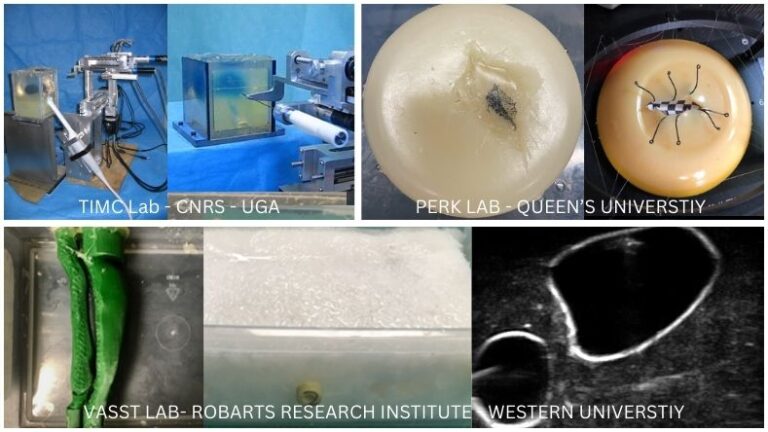Ultrasound-(US)-compatible phantoms comprise various materials, structures, or landmarks with known geometric configurations that can be captured with sonography. They typically aim to mimic the mechanical and tactile sensation, as well as the anatomical and pathological features of human tissues, for use within novel US-based systems and simulated medical interventions. The price difference between lab-made and commercially available US-compatible phantoms resulted in the publication of many methods categorized as low-cost. The aim of this review is to compile and summarize papers on US-compatible spine, prostate, vascular, breast, kidney, and liver phantoms. We review papers for cost and accessibility, providing an overview of the materials, construction time, shelf life, needle insertion limits, and manufacturing and evaluation methods summarized by anatomy.
Gelatin, agar, and PVC are the most common materials within the compiled papers. Gelatin and agar are inexpensive and widely available but limited by short shelf lives and visible needle tracts. PVC and ballistic gelatin are more expensive but have unlimited shelf lives and repairable needle tracts. Many authors use molds to produce accurate anatomical models. Molds are commonly manufactured using 3D printing. PLA is the most cost-effective 3D-printing material, but ABS is appropriate for more detailed prints or use with materials with high melting points. Silicone is also commonly used to create negative molds by casting 3D-printed models or excised organs. Across the compiled articles, the most common evaluation methods involve testing or referencing the materials’ acoustic properties, gathering user feedback through questionnaires, or including sample images. Many authors experiment to find materials or mixtures with the most similar acoustic properties to the target tissue and evaluate the materials in their phantoms for acoustic attenuation, Young’s modulus, and speed of sound. Overall, this paper aims to summarize a breadth of US-compatible phantom research to enable informed phantom development.

